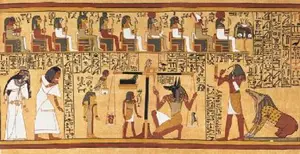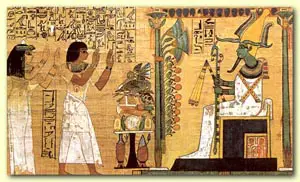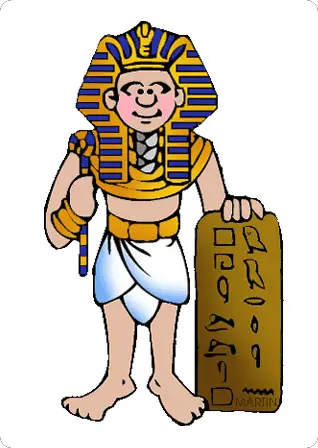Egyptian Religion
The people of ancient Egypt developed their religion based on gods and goddesses and the powers that they had.
They had a deep belief in the supernatural and that their lives were controlled by their deities.

Ancient Egypt Religion Facts
- The ancient people of Egypt followed many different Gods like Seth, Isis, Anubis, Nu, Re, and Osiris.
- Some people supported Gods to follow their profession like Thoth the god of scribes
- Local villages often chose to be represented by one God
- In local villages, an important part of their beliefs and practices was to follow one God only
- The people in villages would worship at shrines that were erected in the village
- Gods were often represented by animals such as lions, cats, rams, and crocodiles
- The ancient Egyptian religion contained roughly 2000 gods
- Osiris the god of the underworld was one of the most worshiped
- Some other highly worshiped God include Isis the goddess of motherhood and abundance; Horus, god of the sky
- The Pharaoh was believed to be part man and part god and had good relationships with the gods
- The Pharaoh was believed to be the go-between Egyptian humans and the gods
- When the Pharaoh died Egyptians believed he would become a god
- Egyptian society also believed if the nation was in turmoil it was the Pharaoh’s fault for upsetting the gods.
- Another belief and practice that the ancient Egyptians believed in was the afterlife
- They had many different rituals which included mummification
- They wanted to preserve the body for as long as possible after death to allow the spirit to have a place to reside
- The body was wrapped in cloth and would also contain jewels and amulets
- A mask was also placed on their face bearing their likeness
- In the tomb of the deceased, they would also place drink, food, and riches
 Lower Egypt and Upper Egypt
Lower Egypt and Upper Egypt
In old Egypt, there were two Kingdoms called Lower Egypt and Upper Egypt.
Both of these kingdoms had their own religions.
When the two kingdoms became one many of the religious beliefs and cultures were combined.
The Egyptian civilization lasted over 3,000 years and during this time many of the beliefs and customs changed.
The people of ancient Egypt were also influenced by their main source of life, which was the Nile River.
The Nile gave them water for growing crops, drinking, sailing, and trade.
Flat Earth
Ancient Egyptians believed that the world was flat and made of clay.
They thought that it floated on a large sea of water and that the Nile River was one of the springs from this water.
They thought that all of the forces of nature could be identified as the children of a creator god.
They believed the universe was set in an established way of ‘balance’ as well as ‘truth’, and that this could not be changed.
The Pharaoh
The pharaoh was the king and leader of Egypt and was thought to be both man and god.
He could control nature, protect the people, start wars, and keep their country successful.
The other gods and goddesses of ancient Egypt each had a job or role in the daily life and existence of ancient Egyptians and there were many temples built to honor them.
Religious Rituals
The ancient Egyptians participated in religious rituals and traditions so that their gods and goddesses would help to give them happy lives with an abundance of food.
Priests and priestesses were assigned to the temples to help in watching over the contributions and helping the people pay tribute to the gods.
Many of the ancient Egyptian gods and goddesses were thought to look like humans and animals.
Each was shown in pictures with different bodies or heads of animals, depending upon the type of job that the god might have and the power that they associated with the animal or bird.
The gods and goddesses were often set up in sets of two, each showing the opposite side, such as life and death.
Other gods were associated together because they were similar, such as Amun, the god of hidden power who was paired with Ra, the god of the sun.

Some of their gods and goddesses were shown to be more powerful than others.
They changed throughout Egyptian history as some were raised above others.
The Afterlife
One of their main beliefs was that when a person died they would go to an afterlife and live the same kind of life they had on earth.
In order to live that kind of life they had to have their body and be able to take all of the things with them that they would need.
This is why the Egyptians created mummies and put all of their possessions in the burial tombs.
The ancient Egyptians believed that in order to enter the afterlife, the person would go to the Hall of Truths and would have to take a test.
Anubis, the god of the dead, would weigh the heart on a scale, and on the other side of the scale would be an ostrich feather.
If the feather weighed more than the heart, it showed that the person led a good life and they could enter the afterlife.
If it didn’t the soul of the person would be eaten by Ammit, a female Egyptian demon that had the body of a lion and the head of a crocodile.
The ancient Egyptians devoted their lives to honoring their gods and goddesses through rituals and building temples to honor them.



